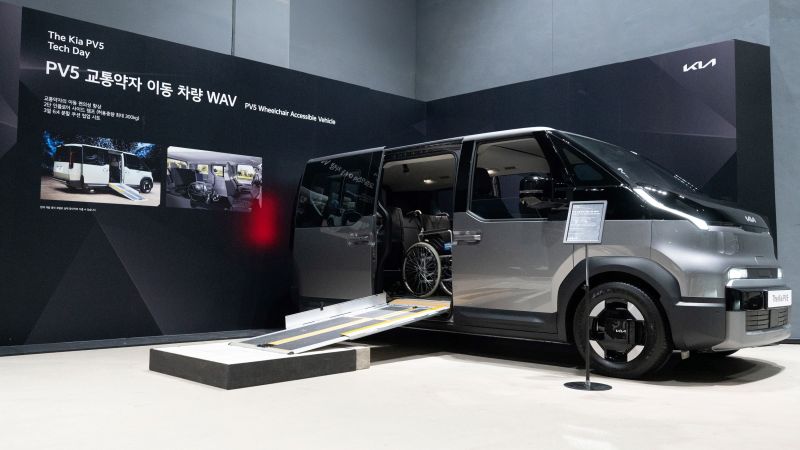Kia Corporation has officially revealed the PV5, its first purpose-built electric vehicle under the Platform Beyond Vehicle (PBV) banner, at Kia PV5 Tech Day held at the IVEX Studio in Gwangmyeong. The event highlighted the vehicle’s development process, technological innovations, and Kia’s ambitious push into flexible, modular mobility solutions.
Under the theme “Technology that adapts, mobility that expands”, the PV5 is designed as a transformative mobility platform — not just a vehicle — intended for diverse business, utility, and accessibility needs. It represents the first step in Kia’s long-term vision for scalable electric mobility tailored to real-world customer demands.
Customer-Led Design for Maximum Versatility
Central to the PV5’s development was Kia’s unique customer-driven approach. The company held multiple PBV Partners Day events in 2022 and 2023, gathering feedback from over 120 businesses across global markets. This input directly influenced features such as removing the front passenger seat for added cargo space, using stain-resistant interiors, and designing walk-through cabins in high-roof variants.
Kia also developed a Wheelchair Accessible Vehicle (WAV) version of the PV5, with a low floor, side-entry ramp, and universal wheelchair securing systems — aiming to fill a gap often neglected in commercial EV segments.
Groundbreaking Modular Technology
The PV5 sits on Hyundai Motor Group’s E-GMP.S platform — a new modular system adapted from the proven E-GMP architecture. It features standardized components like motors and batteries, and introduces a ‘PE room’ layout to maximize space. The result is easier serviceability, enhanced battery protection, and reduced total cost of ownership.
Three battery options will be available:
- 43.3 kWh LFP
- 51.5 kWh NCM
- 71.2 kWh NCM
Each will be paired with a 120 kW motor generating 250 Nm of torque.
Flexible Body System Enables 16 Variants
A standout innovation is Kia’s Flexible Body System, enabling up to 16 configurations using modular body parts. Seven base models are available at launch, including cargo standard, cargo long, and cargo high roof. Conversions are simplified by using common base structures and easily replaceable components.
Passenger models include 2-2-3 and 1-2-3 layouts, while cargo models offer up to 5.1 cubic metres of space. A low step height and 5.5m turning radius make the PV5 highly maneuverable in urban settings.
Software Ecosystem and Conversion-Ready Design
Kia has also introduced an Android Automotive OS-based infotainment system tailored for PBVs, offering real-time fleet management and integration with Kia’s Pleos App Market. The cabin is designed with AddGear mounting points, enabling business users to attach accessories like payment systems and scanners.
To facilitate custom conversions, Kia is launching a PBV Conversion Center and Conversion Portal System, providing factory-grade conversions and technical support to global partners.
Production Begins, Future Models on the Way
Production of the Passenger and Cargo Long variants starts this month, with more models to follow. Kia also confirmed two future PBV entries — the PV7 in 2027 and the PV9 in 2029 — aimed at expanding the platform for larger-scale commercial and lifestyle use.
With the PV5, Kia positions itself at the forefront of a new era of modular, sustainable, and customer-centric mobility, laying the groundwork for a revolutionary PBV ecosystem.

